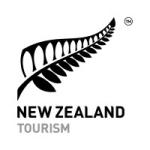Rare kiwi will be released into Otago wild
New Zealand’s wildlife-rich South Island region of Otago is about to welcome its first wild kiwi for almost 140 years - but not just any kiwi, these are the critically endangered Haast tokoeka.
Only 350 of the rare kiwi are left in the wild and on 30 October, six to eight of the birds will be released at Orokonui Ecosanctaury - a new fully-fenced, predator-proof conservation reserve just north of Dunedin.
The transfer is the first into what New Zealand's Department of Conservation (DOC) terms as a "fenced mainland island", and is the biggest step yet in the bid to protect the iconic South Westland species and ensure its survival.
South Westland habitat
Gareth Hopkins of DOC says that in their natural range in the South Westland region, Haast tokoeka kiwi are restricted to a relatively small area.
The juvenile kiwi to be transferred to Orokonui started life as eggs in their native region but were removed as part of kiwi protection programme BNZ Operation Nest Egg.
"In the past the young have been heavily predated by stoats. Without intervention these guys wouldn’t stand a chance," Hopkins said.
The eggs were incubated at Willowbank Wildlife Reserve in Christchurch, and the hatched kiwi looked after by husbandry rangers until they were big enough to release onto Rona Island in Fiordland National Park.
Orokonui Ecosanctuary
Chris Baillie, manager of Orokonui Ecosanctuary - which aims to bring home Otago’s exiled wildlife and enhance the region’s reputation as the wildlife capital of New Zealand - says the reserve is the ideal habitat for young kiwi to live and breed.
"We have a great supply of invertebrates for kiwi tucker and micro-climates that will provide excellent habitat. The kiwi will be fitted with transmitters so that staff and volunteers can monitor them regularly," Baillie said.
As well as providing a small insurance population, allowing for the maintenance of genetic diversity and providing opportunities to research kiwi productivity issues, any offspring of the Orokonui kiwi will eventually help rebuild the wild population.
The rare kiwi’s new home already shelters a large variety of native residents, which include kaka, saddleback, South Island robin, Otago jewelled geckos, and 11 species of native fish. The animals are all protected by a predator proof fence that was constructed in 2007.
Background: NZ kiwi - Haast tokoeka
The Haast tokoeka kiwi is one of the most highly endangered bird species in the world with only 350 individuals remaining. As one of New Zealand’s rarest kiwi, its status has been declared as ‘nationally critical’.
Two thirds of the wild population live in an 11000ha Haast Tokoeka Sanctuary, 20km south of Haast in the remote West Coast region.
Predation of young kiwi by stoats is the main cause of decline.
The last kiwi recorded in Otago were two little spotted kiwi killed by a dog in Burkes in 1872. Their skins are in the Otago Museum.
The kiwi transfer project has been driven by the Department of Conservation and has the support of Te Runanga o Makaawhio, Te Runanga o Ngai Tahu, Kati Huirapa Te Runaka ki Puketeraki and Otago Natural History Trust, managers of Orokonui Ecosanctuary.
The Trust says the transfer is a great step forward in restoring the Orokonui valley ecosystem to the way it was before human arrival. The kiwi will also help boost education about conservation.
Other Haast tokoeka insurance populations have been established on Rarotoka Island in Foveaux Straight, and on Coal Island in Preservation Inlet.
